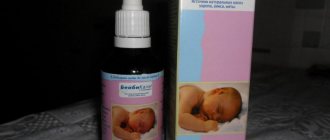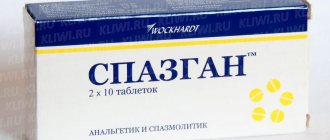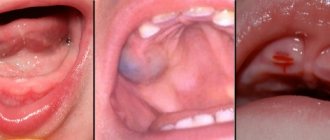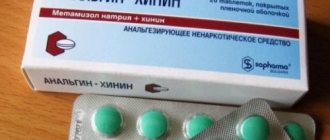How to express milk for storage
Separation from your child is not a reason to interrupt natural feeding. Save food for a short period of time, or create a milk supply. There are manual and mechanical expression.
Manual expression
At home, the mammary glands are expressed manually. Breast milk is sterile, but in any liquid environment there is a danger of pathogenic microorganisms multiplying, which is extremely dangerous for the baby. Therefore, during the pumping process, it is important to strictly follow the rules of hygiene. Wash your hands thoroughly with soap, and just wash your chest with water to avoid cracks. Sterilize containers for collecting milk.
Breast pump
Make sure that expressing using a breast pump is painless and comfortable for you. First of all:
- take a warm shower and get another “flush” in your chest;
- drink hot tea with milk;
- relax, stroke your breasts, mentally directing the milk to its center;
- put on the suction and monitor its intensity level;
- Express the milk into a glass bottle or special container;
- select a storage method.
To make the device last longer, after use, rinse all parts with running water and dry.
What not to do with breast milk
Below is a list of actions that are extremely undesirable to perform:
- Freeze the baby's food for the second time.
- Use a microwave to defrost or warm up the product.
- Heat and boil the milk in a saucepan over an open fire.
- Reheat the warm product.
- Feed the baby the remaining food from the last time. Milk residues can become a breeding ground for pathogenic bacteria.
- Mix freshly decanted raw material with frozen product.
- Freeze breast milk by filling a sterile bottle completely. You need to leave some space.
When handling any expressed treats from your baby, you must follow the rules of hygiene.
What to store in
The utensils used must meet all applicable standards and requirements. Pharmacies offer glass bottles and sterile polypropylene containers of a special composition that are safe for children.
Glass bottles
The most environmentally friendly option is to use glass bottles. At the same time, you will also save on used bottles with caps and jars of baby food. All the disadvantages of glassware are more than compensated for by its positive properties:
- it washes off perfectly;
- withstands all types of sterilization, incl. steam treatment;
- used repeatedly;
- non-toxic when heated.
Adviсe:
- Do not risk freezing the product in a glass container. Glass will not withstand low temperatures in the freezer for long;
- glass may crack due to a sharp temperature change during heating;
- Store glass milk bottles on the refrigerator shelf. When frozen, the container may burst under the strong pressure of the increasing liquid.
Plastic bottles
You can also store breast milk in plastic bottles.
Bottles from Medela, Philips Avent, Canpol Babies are compatible with breast pumps, which allows you to express milk directly into the container. Bottles are available in different volumes - from 150 to 250 ml, with a scale for measuring the amount of expressed milk.
Special containers
Plastic containers for storing baby food have become widespread. They are not cheap (from 300 rubles and above), but they have advantages: the containers are durable, they can be used many times, they do not crack, you just need to wash them and pour boiling water over them. Manufacturers guarantee reliable tightness and safety, citing mainly the absence of besfinol A.
Attention! Bisphenol-A is a synthetic estrogen, synthesized in 1891 by the Russian chemist A. Dianin. It is used as an inexpensive hardener in the processing of plastics; it can be contained in baby bottles and plastic dishes. The substance has a negative effect on the brain, causing tumors of various origins, diabetes, obesity, and autism. Dangerous when heating or storing food or liquid for a long time.
In Russia, the production of baby bottles has begun by companies that have abandoned the use of this chemical compound. The “BPA-free” icon indicates the absence of this substance in the packaging.
Special packages
Plastic bags are sterile, easy to use, but expensive (average price: $10). Packages from Medela (from 800 rubles) and Avent (from 450 rubles) are popular among mothers. The package contains 25 bags of 150-180 ml:
- consist of two-layer polypropylene;
- the seams are additionally reinforced;
- The hole for pouring milk is wide;
- the base is stable;
- double protection clip;
- They are attached directly to the breast pump using adhesive tape.
How to prepare a storage container
Prepare a clean, tightly sealed container for expressing. Make sure the container is heat treatable (glass bottles, jars, plastic containers). Polypropylene bags specially designed for this purpose do not require preparation.
Advice. Do not choose disposable tableware for this purpose! Below is a table of the suitability of plastic containers for freezing and heating milk.
| Designation (marking) | Material | Suitability of the container for storing milk |
| Polypropylene | Safe to use, can withstand temperatures from -42° to +132°C. Safe for storing, heating, freezing the product. | |
| Polystyrene | Disposable tableware. chemically unstable, contains styrene - a carcinogen that penetrates into the product when heated. Not suitable for storing expressed milk. | |
| Polyvinyl chloride | A poisonous and dangerous type of plastic, it contains phthalates, bisphenol A, heavy metals (lead, cadmium, chromium, formaldehyde. Inadmissible for use. |
Thawing breast milk
You also need to know how to warm frozen milk. It should be removed from the freezer ahead of time and transferred to the top shelf of the refrigerator.
At 8 degrees, a container with 120 ml of frozen milk will defrost in about a day.
This time must be taken into account when planning feeding. Thawed milk can already be heated and fed to the child. You can continue to store it in the refrigerator.
Thawed and unused product can be stored near the back wall of the refrigerator for a day, but cannot be re-frozen.
The importance of proper defrosting of milk stems from the desire to maximize the preservation of nutrients in it. Very low storage temperatures allow expressed milk to retain a maximum of these substances.
Rules for storing breast milk
Breast milk is sterile. It has an ideal temperature regime for infants, a balanced composition and properties - antimicrobial, immunomodulatory, anti-inflammatory. Milk retains its valuable qualities for 4 hours after it was collected (at 28° C). Long-term storage requires low temperatures.
In a refrigerator
If you plan to store breast milk for a week, place the bottles in the refrigerator and follow these guidelines:
- Sterilize a regular container, otherwise the milk will quickly turn sour;
- Date the dishes with the time of pumping.
- Place the bottles closer to the back wall of the refrigerator, where temperature fluctuations are less (unlike the door).
The separation of milk into two parts (a fatty film at the top and a watery part at the bottom) is a common phenomenon that has nothing to do with the quality of the milk. Shake, the product will become homogeneous again.
Advice. If the milk takes on a soapy smell, discard this type of storage. This sometimes happens in self-defrosting units.
In the freezer
The storage period of a dairy product depends on the power of the freezer, the frequency of its use and the location of the containers. Remember simple rules:
- freeze the product quickly, defrost slowly! Begin freezing by placing the bags in the top compartment of the freezer. The temperature is the lowest there. After complete freezing, place the bags lower (this applies to a separate freezer);
- Always freeze. Do not throw away breast milk, even if your baby refuses it. Later it will become an excellent addition to porridges, vegetable and meat purees, and desserts;
- Place in the freezer portions for one feeding (120-160 ml), otherwise the remaining defrosted milk will have to be thrown out.
At room temperature
Thanks to its bactericidal properties, milk remains fresh:
- at 15 °C – the whole day;
- at 22 °C – 10 hours;
- at 25 °C – 6 hours.
If you are leaving your baby for less than a day, you will not need a refrigerator. You can place the products in the basement, on the veranda, balcony, where it is cool (10-15°C). Rest assured that it will not spoil within 24 hours.
If there is a need to leave, cover the top of the milk with a “breathable” material - several layers of gauze or a linen napkin ironed on both sides. This will protect the milk from the sun, provide a small amount of oxygen, and prevent anything foreign from getting into it. You should not leave the bottle in the sun if you do not plan to quickly obtain the curdled product.
How long can breast milk be stored?
Breast milk can be stored for a long time. Canned, it can be stored for six months or more. It depends on your planning and execution of the program "maximum" or "minimum". In accordance with this, the following is created:
- long-term milk “bank” (when the surplus is frozen, the mother needs to leave for a long time, etc.)
- short-term supply (from several days to a week).
Important: If you are going to store milk for a long time, keep it at a low temperature. When deep frozen, milk is able to retain its unique properties throughout the year.
Having decided on the program, you select the means: a thermal bag, a refrigerator, a freezer compartment or a separate chamber with low temperatures. Then the containers: glass containers - for short-term waiting (on the countertop, in the refrigerator); containers and sterile bags - for a long time (in freezers).
Preserving colostrum
Use an unusual type of milk container - a medical syringe. It is ideally suited for preserving colostrum. It is possible to express and store the first milk not only after childbirth, but also during pregnancy.
Advice. Do this strictly with your doctor's permission! Excessive stimulation of the breast threatens premature birth.
While waiting for the baby, the following is done:
- colostrum is collected in a sterilized spoon, then in a syringe (5, 10 cc) and placed on the refrigerator shelf.
- the contents of 3-4 syringes collected per day are poured into a special sealed bag with a zipper, the storage start date is signed
- The package is sent to the freezer before delivery.
The table shows the shelf life of expressed milk and colostrum for a healthy baby:
| Storage temperature | Expressed milk | Colostrum |
| Room temperature 22°-25°C | 6 hours | 4 hours |
| Room temperature 18°-22°C | 10 o'clock | 12 o'clock |
| Room temperature 10°-12°C | 24 hours | 12 o'clock |
| Refrigerator +1° +3°С | 7 days | 24 hours |
| Refrigerator freezer -12° -18°С | 4-6 m. | 3m. |
| Deep freezing chamber -18° -24°С | up to a year | 3m. |
What is the best way to store expressed milk?
— Storing breast milk is recommended in glass bottles, plastic containers or special bags (without bisphenol A).
“Containers containing bisphenol A, which has been found in some plastic containers (including baby bottles), should be avoided based on strong evidence found of its negative effects on the endocrine system. Caution should be exercised when using containers containing bisphenol S, an alternative to bisphenol A, as it may also have harmful effects."*
— The container in which the milk will be stored must be tightly closed. — It is advisable to write the freezing date on the container for expressed milk if long-term storage is expected.
How long can expressed milk be stored in the refrigerator, at room temperature and other conditions?
- At room temperature (from +16C to +27C) milk can be used within 4–8 hours. In the range from +27 C to +32 C, the permissible storage time is 4 hours.
- In a thermal bag (at a temperature of +15 C and below) it can be stored for up to 24 hours.
- In the refrigerator (from +4 C and below), the optimal shelf life of milk is 4 days, up to 8 days are allowed if cleanliness is maintained.
- In the freezer compartment of the refrigerator (at a temperature of -18 C and below), the optimal shelf life is up to 6 months, acceptable up to 12 months (according to The Academy of Breastfeeding Medicine, (ABM)).
- It is allowed to store expressed milk for up to one year in a separate freezer (from -17 C and below).
“Breast milk should not be stored in specialized medical containers, such as those used to collect urine or other body fluids, as there is insufficient evidence of their chemical safety and impact on the health of newborns; Only food-grade plastic containers should be used to store breast milk.”**
Of course, the longer the milk sits, the more beneficial components in it can be destroyed. It is better to use it within 3–6 months from the moment of freezing. This is another reason to sign containers.
The temperature at the back of the refrigerator or freezer is the most constant. This is the most secure place to store your milk containers.
Storing expressed milk: there are nuances!
- If you decide to freeze milk, you need to do it as soon as possible.
- Before placing milk in the freezer, you need to cool it in the refrigerator for 1-2 hours.
- You cannot add freshly expressed milk to already frozen milk; you should first cool the new portion.
- Milk that has already been thawed and heated cannot be added to frozen milk. Temperature changes will reduce the shelf life of the latter.
- Thawed and heated milk cannot be re-frozen; it must be discarded.
Shelf life of thawed breast milk
Proper thawing is extremely important for breast milk. One wrong step, and it will lose most of its nutrients, primarily enzymes and vitamins. Follow the basic rule: defrost slowly. Rapid defrosting will render the product useless.
How to defrost correctly
Containers and bags of the required volume from the freezer are placed on the middle shelf of the refrigerator until completely defrosted. After 6-8 hours, place the containers on the countertop, leave for another 2 hours at room temperature and reheat.
If you need to defrost milk faster, reduce the time it stays in the refrigerator and heat it longer in warm water. As a last resort, defrost it at room temperature. If a frozen product is placed in boiling water, then immediately after heating you can safely pour it out, due to the lack of anything useful in it.
Rules for heating and defrosting expressed milk
In order not to lose the beneficial properties of frozen breast milk, you need to know the rules for defrosting and heating it before feeding your baby:
- Move the container with the baby's food from the freezer to the refrigeration compartment, and then wait until the treat is completely thawed.
- Mix a portion of the resulting raw material until smooth and pour it into a sterile baby bottle for feeding.
- Then the container needs to be burned using a water bath to the desired temperature.
In addition, children's stores sell special warmers designed for baby bottles. This technique will help to warm up breast milk to the required temperature (37°) and notify the nursing mother about this.
Here are a few more tips for defrosting mother product:
- It is recommended to freeze 1 – 2 servings (150 ml each), you should not make several stocks;
- defrost the product that was placed in the freezer earlier than others;
- the time for thawing the liquid should be calculated in advance (about 10 hours before feeding the baby);
- warm up only the melted delicacy; it can be stored for no more than 4 hours outside the refrigerator and 24 hours on the appliance shelf;
- To determine the desired t°, it is recommended to apply a small amount of milk to your wrist.
In addition, you should try warmed milk before feeding your baby. Spoiled delicacy has a sour smell and bitter taste. It should not be given to a baby.
Is it possible to store warmed expressed milk?
The optimal temperature of breast milk for feeding a baby is 36-37 degrees. Overheating is extremely undesirable. The heating temperature is no higher than 40° C. At high temperatures, the same thing happens as with rapid defrosting - useful microelements and vitamins are destroyed.
There are different ways to heat frozen baby food:
- under running warm water, periodically shaking the contents;
- in water heated to a boil. Boil water in a bowl. Switch off. Place a bottle of milk in it and, shaking, wait for it to heat up. You can use an infrared meter.
- in a baby bottle warmer. It maintains the optimal temperature for heating at 37° C and eliminates overheating.
Advice! Heat thawed breast milk once and store it in the refrigerator for 24 hours.
Do not refreeze milk that has already been heated! Firstly, the quality will suffer, and this is unsafe for the child. During initial heating, air access opens to the product and various kinds of microorganisms penetrate there (in non-hazardous quantities). Unsterilized milk is again sent for preservation along with them. Microbes will “overwinter” well and, upon reheating, will dangerously multiply in the environment they most desire—warm liquid.
How to properly heat milk after storing it in the refrigerator?
In order for all the nutrients preserved after storage in the refrigerator to reach the baby, it must also be properly heated. There are two options:
- Place a tightly closed container under running hot water and continue heating until the optimum temperature is reached;
- After pouring milk from an airtight container into a feeding bottle, place the latter in a container with hot water.
You can simply determine the correct temperature of milk - drop it on the back of your wrist - if the drop is not felt, then the temperature is appropriate.
Before offering milk to the baby, the mother should taste it herself - if it has become rancid or sour, then it will have to be thrown away.
Video on how to store expressed breast milk and what to do with it after storage:
How to store breast milk while walking or traveling
When walking with your baby, it is convenient to use thermal bags. Their main function is to preserve cold. Inside there is a foil layer that helps maintain the temperature for 3 hours.
Cold storage batteries are included with the bag. These are sealed containers with a salt solution or special gel inside. They are frozen before use, then placed in a bag where the melting gel releases the cold. The shelf life of the product increases to 10-12 hours.
When traveling for a long time with a baby on a train or by car, it is convenient to use a car refrigerator. It connects to a power outlet or car cigarette lighter and cools the containers.
How to keep it longer
If, for a number of reasons, you do not plan to breastfeed your baby until he is 1.5-2 years old, then there is a need to preserve your milk longer. You will receive a fresh, healthy, vitamin-rich dairy product if you listen to the recommendations:
- containers must be clean and well closed;
- It is advisable to exclude contact with air and sun;
- freeze milk at different temperatures, including low.
- the container should be convenient and small in volume;
- use special containers, they are sterile and have a measuring scale.
How should you freeze breast milk?
If a mother who is breastfeeding has a long-term departure or needs to undergo a course of treatment based on medications that are incompatible with breastfeeding, then it is necessary to prepare in advance and freeze a sufficient amount of milk.
Unfortunately, scientists have found that some of the beneficial ingredients are lost when the product is frozen . But still, breast milk from the refrigerator is healthier than its analogue in the form of infant formula . Expressed milk can be placed in a freezer, where the temperature is at least -18 degrees, but it will be stored there for a maximum of six months.
Basic rules for freezing breast milk:
- Milk collected at different times over time is prohibited from being poured into the same container ; it must be frozen in separate containers and do not forget to sign the date of freezing .
- Expressed warm milk be cooled to ambient temperature before freezing .
- When frozen, due to sub-zero temperatures, the expressed product will lose a small percentage of its fat content and some of its nutrients. The color and smell of milk will also change after freezing .
- It is strictly forbidden to refreeze breast milk after preliminary defrosting . This milk should not be given to a child; it can cause complications with the baby’s gastrointestinal tract.
Return to content
What not to do
Mothers face a difficult task - to maintain the quality of expressed milk and eliminate any possibility of infection. Therefore, get some advice on what you definitely shouldn’t do:
- secondary freezing is an open gate for pathogenic microorganisms. You can't freeze it twice!
- A microwave oven is a destroyer of enzymes and vitamins and heats unevenly. Not recommended.
- Reheating the same defrosted portion is prohibited!
- Open fire for rapid heating and sterilization are unacceptable!
Listen to the advice, take it into account and feed your baby with mother's milk. Storing breast milk means giving him a well-preserved, unique product for a long time, and the mother continuing to lead an active lifestyle.









